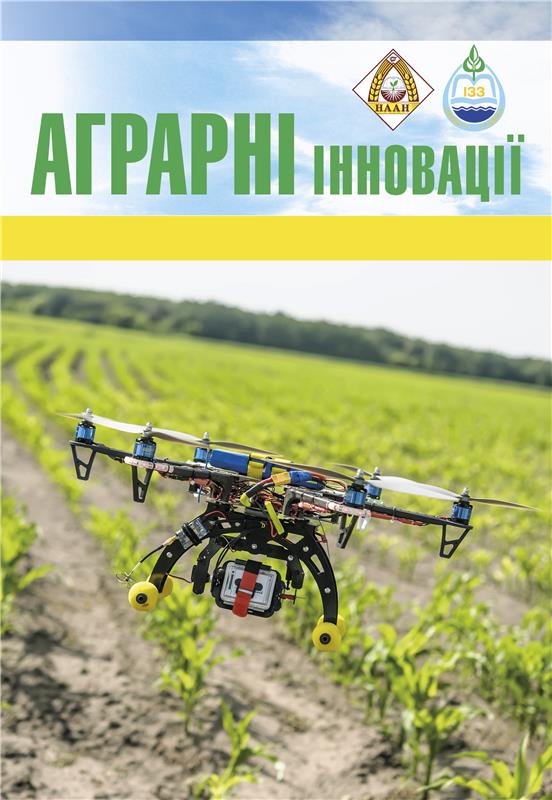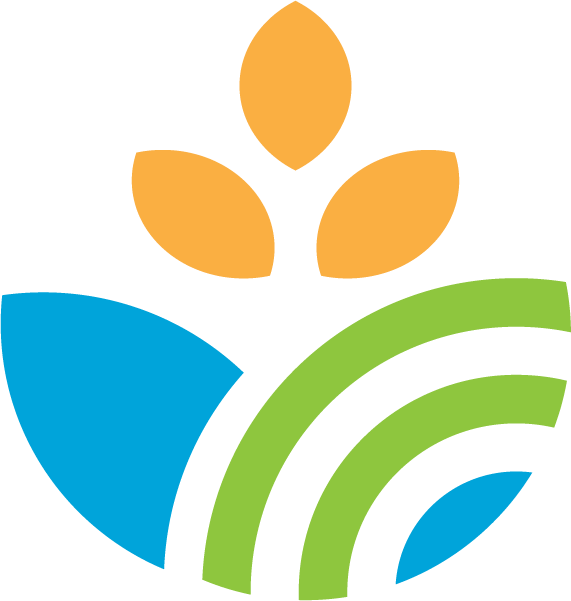THE INFLUENCE OF EXTRA-ROOT NUTRITION ON THE FORMATION OF THE YIELD OF EDIBLE TOMATO VARIETIES (SOLANUM LYCOPERSICUM L.)
Abstract
Objective. The purpose of our research was to establish the patterns of formation of the yield of the tomato of the edible depending on the varietal properties and foliar fertilization with microfertilizers.Methods. The field research method involved determining the effect of the use of foliar feeding on the formation of biometric indicators of growth, yields and elements of productivity of edible tomato varieties. The research material was varieties of edible geyser, crucian (early ripe, determinant), handsome, alleonora (medium-sized, determinant) and Anarel Complex Micro. The technology of cultivation of edible tomato varieties involved a seedling method of cultivation. Biometric measurements were performed during the research: the length of the central stem, the diameter of the stem and the area of the leaf surface. The total yield of thefruit was calculated on the basis of fees, which were carried out both in the stage of technical and biological maturity in accordance with the requirements. The quality of the crop was determined by the quantity and percentage of standard fruits from the total crop.The statistical method, through variance analysis, established the smallest significant difference and share of the impact of the factors under study on the yield of edible tomato.Results. Our studies have confirmed the efficiency of foliar fertilization with microfertilizers for the formation of the basic biometric parameters of plants of the edible tomato: the length of the central stem, the diameter of the stem and the area of the leaf surface. According to the results of the field experiment, a positive effect of foliar feeding on the yield of edible tomato varieties was established. Accordingly, with a single treatment of plants with a micro -fertilization in the beginning of budding, an increase in yield by 6.13 % was detected. Two-time treatment of plants with micro -fertilizers (in the beginning of budding + after 14 days) contributed to an increase in yield by 11.6 %. Three-time treatment (in the beginning of budding + after 14 days + after 14 days) provided an increase in yield by 12.8 %. The use of foliar feeding has a positive effect on the size and number of fruits on the plants of the tomato of the edible. The largest yield of standard fruits was obtained for three times the use of foliar feeding (82.4–86.7 %).Conclusions. It is established that the use of foliar fertilization with micro -fertilization of anorel Complex Micro helps to increase the total yield of tomato with high output of standard products, and also has a positive effect on increasing the weight of the fetus and the amount of fruits from the plant.
References
2. навчальний посібник / за ред. О. Ю. Барабаша. К.: Арістей, 2005. 348 с.
3. Бондаренко Г. Л., Яковенко К. І. Методика дослідної справи в овочівництві баштанництві. 3 вид. Харків: Основа, 2001. 369 с.
4. Буйна О.І., Буйний О.В., Рогач В.В., Кур’ята В.Г. Вплив регуляторів росту з протилежним напрямом дії на морфогенез, листковий апарат та продуктивність томатів. Таврійський науковий вісник. 2018. Вип. 100. Т. 1. С. 14–24.
5. Губкіна Л. О., Божок Ю. О. Дроща М. В. Урожайність і якість помідора залежно від густоти рослин та способів зрошення. Сортовивчення та охорона на сорти рослин. 2012. № 3. С. 28–31.
6. Корнієнко С. І., Рудь В. П., Кіях О. О. Терьохіна Л. А. Концептуальні основи розвитку овочівництва та забезпечення продовольчої безпеки. Овочівництво і баштанництво. 2012. Вип. 58. С. 7–17.
7. Куц О.В., Парамонова Т.В., Головко М.О. Позакореневі підживлення комплексними добривами в системі удобрення томата. Овочівництво і баштанництво. Х., 2012. Вип.58. С. 208–216.
8. Мельник, В., Романашенко, О., Циганенко, М., Фесенко, Г., Калюжний, О., Качанов, В. і Романашенко, І. (2020) Використання органічних добрив: економічно-екологічні аспекти. Інженерія природокористування», (3(17), с. 29–34.
9. Логінова І.В. Ефективність різних форм і способів внесення мікроелементів у технологіях вирощування сільськогосподарських культур. Науковий вісник Національного університету біоресурсів і природокористування України. Серія: Агрономія. 2014. Вип. 195 (1). С. 71–78.
10. Прісс О. П., Жукова В. Ф., Залежність урожайності та показників якості плодів томата від погодних умов. Вісник Полтавської державної аграрної академії. № 1 2013. С. 49–51.
11. Санін Ю. В., Санін В. А. Особливості позакореневого підживлення сільськогосподарських культур мікроелементами. Агробізнес сьогодні. 2012. № 6 (229). С. 45–47.
12. Сєвідов В.П. Оцінка впливу позакореневого підживлення препаратом Плантафол на урожайність гібридів помідора (Solánum lycopérsicum L.). Scientific Progress & Innovations. 2024. № 27 (3). С. 26–30.
13. Сєвідов, В. П. Ефективність позакореневого піlживлення нітратом калію на розвиток і продуктивність помідора (Solánum lycopérsicum L.). Scientific Progress & Innovations. 2024, 27, С. 53–58.
14. Удобрення овочевих та баштанних культур: Монографія / С. І. Корнієнко, В. Ю. Гончаренко, Л. П. Ходєєва, Р. П. Гладкіх, Т. В. Парамонова, О. В. Куц, Т. К. Горова, С. М. Кормош, І. М. Гордієнко, В. А. Колтунов, В. Ф. Пащенко, Г. Я. Іллюшенко: [за ред. докторів с.-г. наук В. Ю. Гончаренка і С. І. Корнієнка]. Вінниця : ТОВ «Нілан-ЛТД», 2014. 370 с.
15. Ушкаренко В. О., Вожегова Р. А., Голобородько С. П., Коковіхін С. В. Статистичний аналіз результатів польових дослідів в землеробстві. Херсон: «Айлант», 2013. 378 с.
16. Юрченко С. О., Баган А. В., Шакалій С. М., Баган М. В., Гаврилов Д. О. Вплив позакореневого підживлення мікродобривом Оракул на урожайність перцю солодкого (Capsicum annuum l.). Таврійський науковий вісник. 2023. № 134. С. 208–214.
17. Milenko, O., Shevnikov, M., Solomon, Yu., Rybal- chenko, A., & Shokalo, N. (2022). Influence of foliar top-dressing on the yield of soybean varieties. Scientific Horizons, 25(4), P. 61–66.






